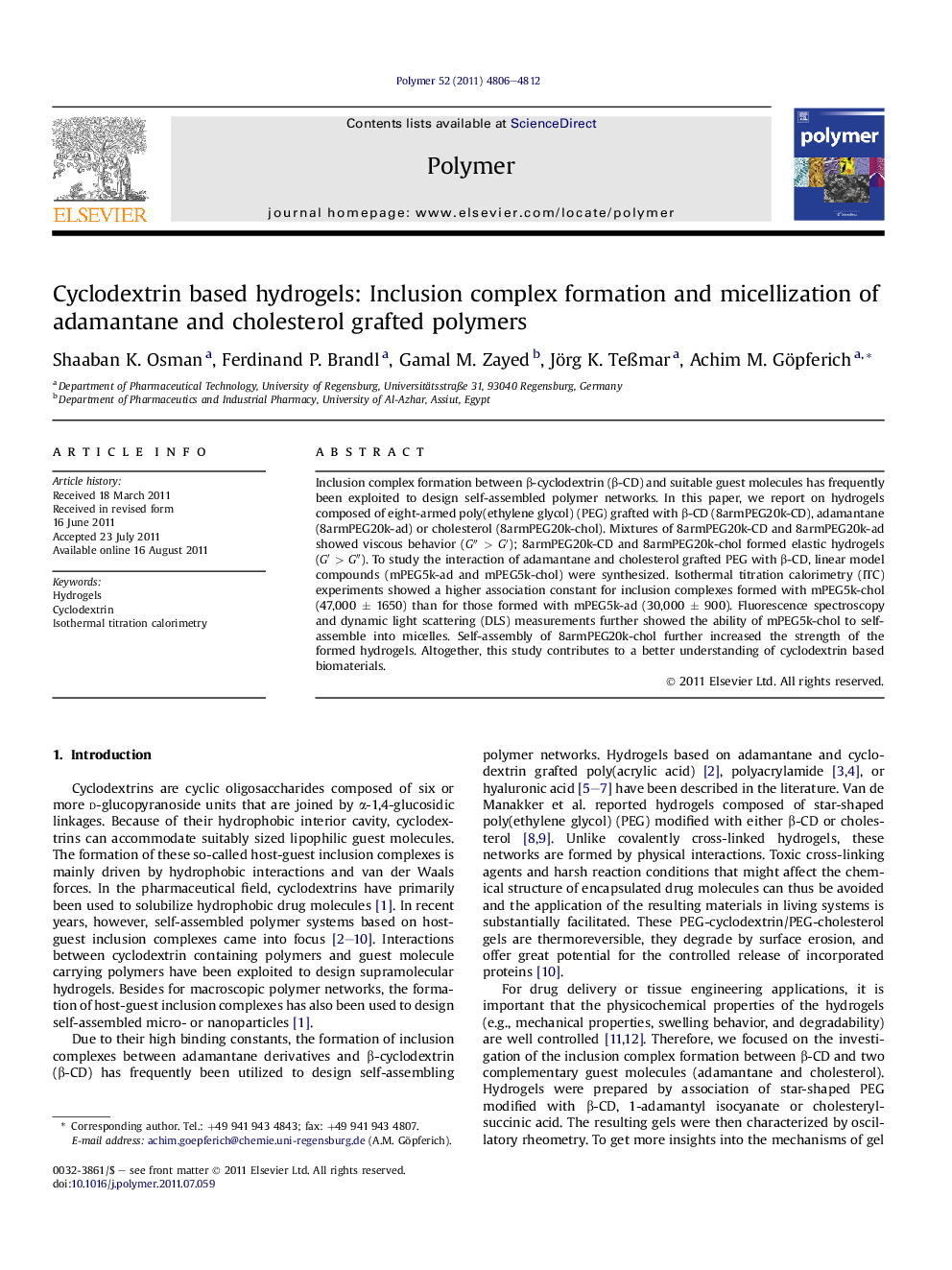| Article ID | Journal | Published Year | Pages | File Type |
|---|---|---|---|---|
| 5184185 | Polymer | 2011 | 7 Pages |
Inclusion complex formation between β-cyclodextrin (β-CD) and suitable guest molecules has frequently been exploited to design self-assembled polymer networks. In this paper, we report on hydrogels composed of eight-armed poly(ethylene glycol) (PEG) grafted with β-CD (8armPEG20k-CD), adamantane (8armPEG20k-ad) or cholesterol (8armPEG20k-chol). Mixtures of 8armPEG20k-CD and 8armPEG20k-ad showed viscous behavior (Gâ³Â > Gâ²); 8armPEG20k-CD and 8armPEG20k-chol formed elastic hydrogels (Gâ²Â > Gâ³). To study the interaction of adamantane and cholesterol grafted PEG with β-CD, linear model compounds (mPEG5k-ad and mPEG5k-chol) were synthesized. Isothermal titration calorimetry (ITC) experiments showed a higher association constant for inclusion complexes formed with mPEG5k-chol (47,000 ± 1650) than for those formed with mPEG5k-ad (30,000 ± 900). Fluorescence spectroscopy and dynamic light scattering (DLS) measurements further showed the ability of mPEG5k-chol to self-assemble into micelles. Self-assembly of 8armPEG20k-chol further increased the strength of the formed hydrogels. Altogether, this study contributes to a better understanding of cyclodextrin based biomaterials.
Graphical abstractDownload full-size image
